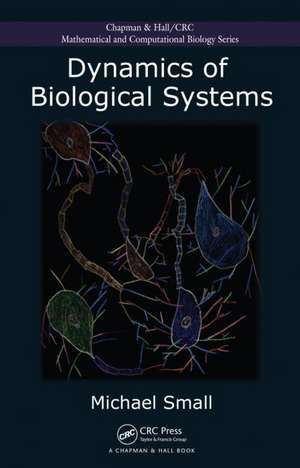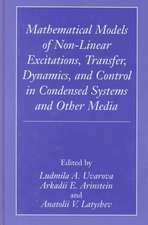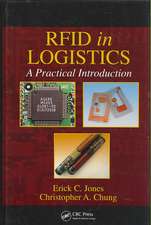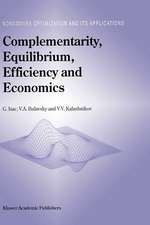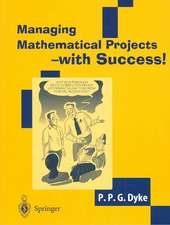Dynamics of Biological Systems: Chapman & Hall/CRC Computational Biology Series
Autor Michael Smallen Limba Engleză Hardback – 25 aug 2011
Through an extensive tour of various biological systems, the text introduces computational methods for simulating spatial diffusion processes in excitable media, such as the human heart, as well as mathematical tools for dealing with systems of nonlinear ordinary and partial differential equations, such as neuronal activation and disease diffusion. The mathematical models and computer simulations offer insight into the dynamics of temporal and spatial biological systems, including cardiac pacemakers, artificial electrical defibrillation, pandemics, pattern formation, flocking behaviour, the interaction of autonomous agents, and hierarchical and structured network topologies. Tools from complex systems and complex networks are also presented for dealing with real phenomenological systems.
With exercises and projects in each chapter, this classroom-tested text shows students how to apply a variety of mathematical and computational techniques to model and analyze the temporal and spatial phenomena of biological systems. MATLAB® implementations of algorithms and case studies are available on the author’s website.
Din seria Chapman & Hall/CRC Computational Biology Series
-
 Preț: 361.61 lei
Preț: 361.61 lei - 9%
 Preț: 643.22 lei
Preț: 643.22 lei - 20%
 Preț: 389.57 lei
Preț: 389.57 lei -
 Preț: 357.22 lei
Preț: 357.22 lei -
 Preț: 357.97 lei
Preț: 357.97 lei -
 Preț: 357.69 lei
Preț: 357.69 lei -
 Preț: 357.16 lei
Preț: 357.16 lei - 9%
 Preț: 688.51 lei
Preț: 688.51 lei -
 Preț: 350.05 lei
Preț: 350.05 lei - 8%
 Preț: 528.20 lei
Preț: 528.20 lei - 20%
 Preț: 526.41 lei
Preț: 526.41 lei - 8%
 Preț: 407.01 lei
Preț: 407.01 lei -
 Preț: 370.11 lei
Preț: 370.11 lei - 8%
 Preț: 460.99 lei
Preț: 460.99 lei - 15%
 Preț: 699.14 lei
Preț: 699.14 lei - 22%
 Preț: 376.15 lei
Preț: 376.15 lei - 12%
 Preț: 305.97 lei
Preț: 305.97 lei -
 Preț: 422.44 lei
Preț: 422.44 lei - 5%
 Preț: 301.09 lei
Preț: 301.09 lei - 24%
 Preț: 702.77 lei
Preț: 702.77 lei - 15%
 Preț: 472.10 lei
Preț: 472.10 lei - 24%
 Preț: 512.37 lei
Preț: 512.37 lei - 15%
 Preț: 534.18 lei
Preț: 534.18 lei -
 Preț: 434.25 lei
Preț: 434.25 lei - 25%
 Preț: 529.77 lei
Preț: 529.77 lei -
 Preț: 455.01 lei
Preț: 455.01 lei - 18%
 Preț: 786.86 lei
Preț: 786.86 lei - 15%
 Preț: 468.17 lei
Preț: 468.17 lei - 20%
 Preț: 388.98 lei
Preț: 388.98 lei -
 Preț: 421.63 lei
Preț: 421.63 lei - 21%
 Preț: 1023.71 lei
Preț: 1023.71 lei - 25%
 Preț: 852.72 lei
Preț: 852.72 lei - 8%
 Preț: 305.97 lei
Preț: 305.97 lei - 24%
 Preț: 460.87 lei
Preț: 460.87 lei - 15%
 Preț: 557.60 lei
Preț: 557.60 lei - 15%
 Preț: 556.77 lei
Preț: 556.77 lei
Preț: 672.40 lei
Preț vechi: 791.06 lei
-15% Nou
Puncte Express: 1009
Preț estimativ în valută:
128.66€ • 134.33$ • 106.49£
128.66€ • 134.33$ • 106.49£
Carte tipărită la comandă
Livrare economică 04-18 aprilie
Preluare comenzi: 021 569.72.76
Specificații
ISBN-13: 9781439853368
ISBN-10: 1439853363
Pagini: 276
Ilustrații: 112 b/w images, 11 color images and 6 tables
Dimensiuni: 156 x 234 x 20 mm
Greutate: 0.52 kg
Ediția:New.
Editura: CRC Press
Colecția Chapman and Hall/CRC
Seria Chapman & Hall/CRC Computational Biology Series
ISBN-10: 1439853363
Pagini: 276
Ilustrații: 112 b/w images, 11 color images and 6 tables
Dimensiuni: 156 x 234 x 20 mm
Greutate: 0.52 kg
Ediția:New.
Editura: CRC Press
Colecția Chapman and Hall/CRC
Seria Chapman & Hall/CRC Computational Biology Series
Public țintă
Undergraduate and graduate students in mathematics or biology; biological engineers and biologists.Cuprins
Biological Systems and Dynamics. Population Dynamics of a Single Species. Observability of Dynamic Variables. Biomedical Signal Processing. Computational Neurophysiology. Mathematical Neurodynamics. Population Dynamics. Action, Reaction and Diffusion. Autonomous Agents. Complex Networks. Conclusion. References. Index.
Notă biografică
Michael Small is a professor of mathematical modelling and director of the Phenomics and Bioinformatics Research Centre in the School of Mathematics and Statistics at the University of South Australia (as of October 2011). He was previously an associate professor in the Department of Electronic and Information Engineering at Hong Kong Polytechnic University. His research interests include nonlinear time series, chaos, and complex systems.
Descriere
With exercises and projects in each chapter, this classroom-tested text shows how to apply a variety of mathematical and computational techniques to model and analyze the temporal and spatial phenomena of biological systems. The mathematical models and computer simulations offer insight into cardiac pacemakers, artificial electrical defibrillation, pandemics, pattern formation, flocking behavior, the interaction of autonomous agents, and hierarchical and structured network topologies. MATLAB® implementations of algorithms and case studies are available on the author’s website. A solutions manual is available upon qualifying course adoption.
